Pet diabetes affects an estimated one in 300 dogs and is the second most commonly diagnosed endocrine disease in cats. A canine’s lifespan after a diabetic diagnosis is only two years while a cat’s is three years.
As caretakers, it is important to understand the balance between insulin and glucose in the pet’s body and what can negatively affect it. Knowing the causes and recognizing the signs of diabetes is key in committing to a treatment plan as early as possible. This blog teaches how to navigate the signs, risk factors, diagnosis and the proper care required to support our furry friends facing this health challenge.
What is Diabetes?
Diabetes mellitus, commonly known as sugar diabetes, occurs in pets when their bodies fail to produce enough insulin or exhibit an abnormal reaction to the hormone. Insulin plays a critical role in cellular function and energy balance for cats and dogs. When carbohydrates are ingested, they release simple sugars into the intestines. These sugars undergo changes in various forms, including turning into glucose, which is then absorbed from the intestines into the bloodstream.
Glucose functions as the main energy source for the cells in the animal’s body. However, the entry of glucose into cells relies solely on the presence of insulin. In the absence of insulin, this process is disrupted, resulting in hyperglycemia (high blood sugar levels). This condition leads to cellular starvation, as the cells are unable to access the energy derived from glucose.

Higher Risk Factors for Developing Diabetes in Pets
Underlying Medical Conditions
There is no single cause to diabetes. Certain underlying medical conditions can elevate the risk for pets. Autoimmune disorders occur when the immune system mistakenly attacks the body’s own cells, potentially impacting the pancreas and insulin production. Viral diseases can compromise the overall health of pets and can negatively affect the organs and systems crucial for glucose regulation.
Cushing’s disease is characterized by an overactive adrenal gland and may disrupt the balance of hormones in the animal’s body. Pancreatitis happens when there is inflammation of the pancreas. This can impair its function and contribute to insulin irregularities, further increasing the risk of diabetes in pets.
Sex, Age and Weight
Unspayed female dogs face double the risk of diabetes compared to males. This is because hormones can affect glucose regulation. Male cats exhibit a higher susceptibility than females because they have a lower insulin sensitivity value.
The risk of both canine and feline diabetes rises when an animal is severely overweight. Obesity causes the cells in the body to become more resistant to insulin. As dogs and cats age, their metabolism slows down, and their desire for exercise decreases. These two factors make it easier for middle-aged to senior pets to gain weight, increasing their chances of obesity and diabetes.
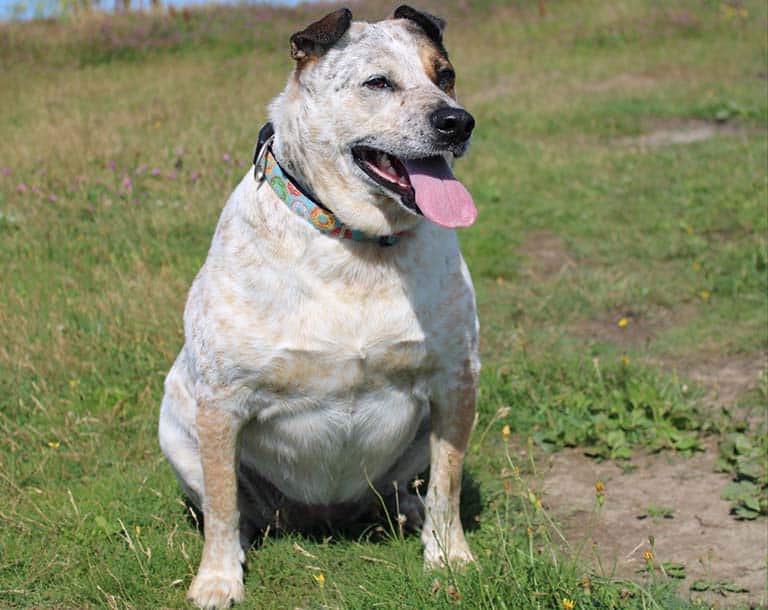
Genetics
Genetics is a contributing factor to the elevated risk of diabetes for pets. Certain breeds are more prone to developing the underlying medical conditions that can lead to diabetes or are more susceptible to obesity. These breeds include golden retrievers, pomeranians, various terriers, samoyeds, Russian blue cats, Norwegian forest cats and Abyssian cats.
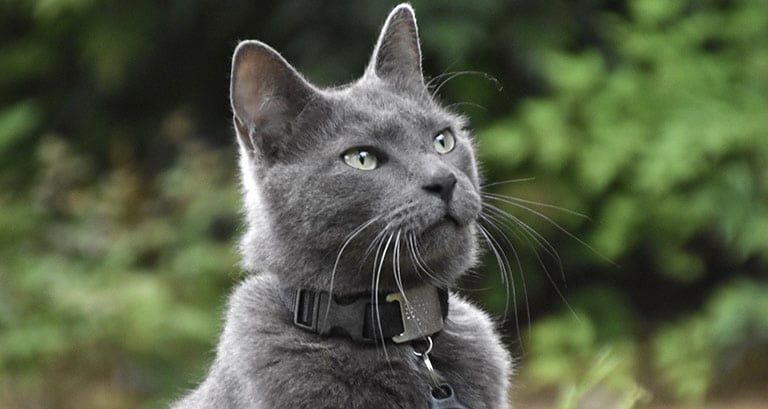
Steroids
Steroids are commonly used to reduce inflammation in the body. However, long-term use of this medicine can cause diabetes. A side effect of steroids is higher blood glucose levels and the development of insulin resistance. The pancreas compensates these changes by producing more insulin, but it can’t keep up with the demand for a long period of time. Eventually, this prolonged strain on the organ may lead to decreased insulin production and function.
What are the Signs of Pet Diabetes?
Increased Thirst and Urination
Both cats and dogs show similar symptoms of diabetes. One of the most common indicators is increased thirst and urination. More water consumption paired with frequent bathroom trips may signal an underlying concern.
The surge in blood glucose levels requires the kidneys to work extra hard to maintain a healthy bodily balance. When the kidneys become overwhelmed, excess sugar is released into an animal’s urine, accompanied by the removal of fluids from the body’s tissues. This process results in dehydration and triggers a heightened sense of thirst. To quench that thirst the pet drinks more water which leads to more urination.
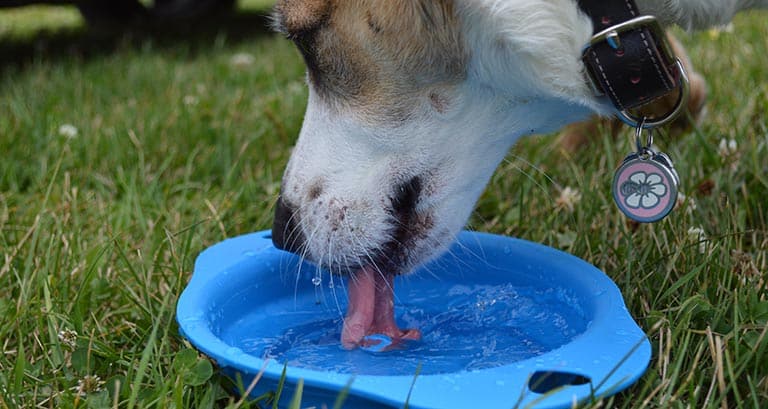
Increased Hunger
The pet may display an increased desire to consume more nourishment. This behavior comes from the body’s inability to effectively use the energy derived from food due to the insufficient insulin production. The cells, deprived of strength, send a signal to the animal’s brain to take in more energy in an attempt to elevate glucose levels.
Weight Loss
Weight loss is common for diabetic pets even with the increased consumption of food. Due to the deficiency in insulin, the body can’t actively use the calories. The cells’ inability to convert devoured calories into usable energy contributes to this metabolic unbalance and the pet continues to lose weight.
How Diabetes is Diagnosed
Diagnosis must be confirmed by a veterinarian. They run tests to identify consistent hyperglycemia and glycosuria in the pet’s body. This process usually requires bloodwork and urinalysis. Additional tests like thyroid testing, urinary tract infections or x-rays are done to gain a better image of the pet’s overall health. This helps the vet know what recommendations they should make for the pet’s diabetic treatment.
Caring for a Diabetic Pet
Injections
Once the diagnosis is confirmed, the vet prescribes an initial dose and type of insulin for the pet. The most commonly used insulins for cats are glargine and PZI. For dogs, Lente, NPH and Vetsulin are the primary choices for treatment. Administering insulin involves injections under the skin which need to be given twice a day with a meal. The vet or vet technician provides guidance on the safe administration of the medicine. The process is generally not traumatic for dogs and cats due to the small size of the needle.
It is crucial to adhere to the prescribed insulin schedule to avoid any fluctuations in the pet’s sugar levels. Regular monitoring of the animal’s blood and urine sugar levels is necessary on a daily basis.
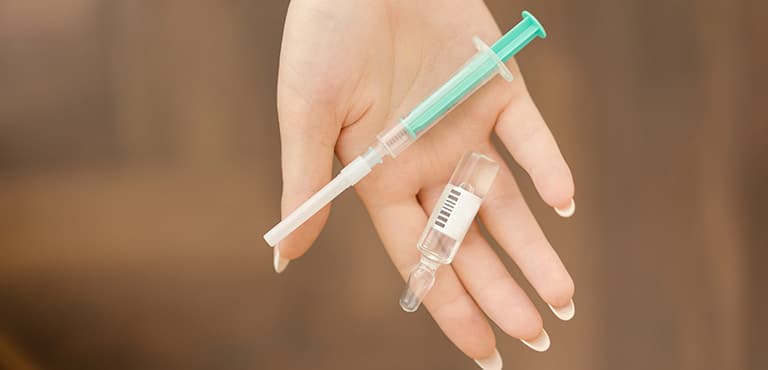
Diet
Both cats and dogs with diabetes are recommended a similar diet for effective treatment. A meal plan with high-protein and high-fiber foods, along with low-fat and low-carbohydrate options, is beneficial in maintaining a healthy body for pets. The goal of this dietary approach is to slow down the absorption of glucose, preventing spikes in sugar levels after meals.
It is important to stick to the feeding schedules given by the vet. Keep an eye on the pet to ensure their appetite remains normal while on the prescribed insulin therapy. If there is no weight increase, or if the pet rejects the offered food, it’s essential to consult with your vet to devise a suitable plan moving forward.
Exercise
Exercising is beneficial in avoiding sudden spikes or drops in glucose levels for cats and dogs. A moderate and consistent exercise routine tailored to the pet’s age, weight and overall health is essential. It is a good idea to avoid creating an exercise plan that is overly strenuous. For dogs, activities such as walks, playing fetch and swimming are excellent daily options.
Cats pose a bit more of a challenge. One way to encourage them to move around the house is to place their food bowl in less accessible places, such as the top of the stairs. Additionally, engaging in games that activate their predatory drive can increase their daily exercise. Toys like cat feather wands, toy mice or laser pointers are great to keep the attention of the feline.
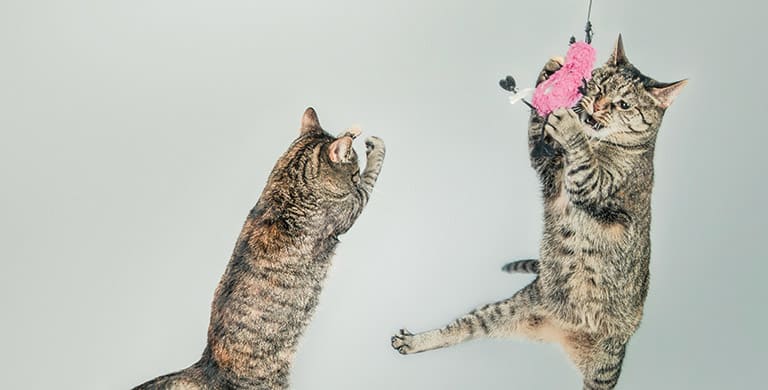
A Diabetic Diagnosis is Not the End
Addressing diabetes in your pet is a crucial responsibility. Recognizing signs and risk factors sets the stage for a productive journey. From diagnosis to daily insulin injections, balanced nutrition and tailored exercise, managing a pet’s diabetes requires dedication. With these steps, proactive pet owners can ensure their pet’s lives remain vibrant despite this health condition.



